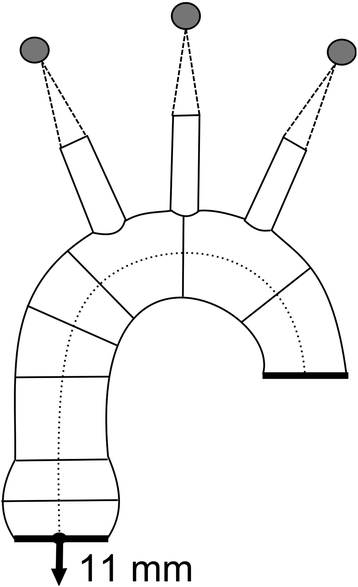Biomechanical analysis of wrapping of the moderately dilated ascending aorta
- PMID: 26231405
- PMCID: PMC4522071
- DOI: 10.1186/s13019-015-0299-5
Biomechanical analysis of wrapping of the moderately dilated ascending aorta
Abstract
Background: External wrapping is a surgical method performed to prevent the dilatation of the aorta and to decrease the risk of its dissection and rupture. However, it is also believed to cause degeneration of the aortic wall. A biomechanical analysis was thus performed to assess the stress of the aortic wall subjected to external wrapping.
Methods: A stress analysis using the finite elements method was carried out on three models: a non-dilated aorta, a moderately dilated aorta and a wrapped aorta. The models were subjected to a pulsatile flow (120/80 mmHg) and a systolic aortic annulus motion of 11 mm.
Results: The finite elements analysis showed that the stress exerted on the outer surface of the ascending aorta in the wrapping model (0.05-0.8 MPa) was similar to that observed in the normal aorta (0.03-0.7 MPa) and was lower than in the model of a moderately dilated aorta (0.06-1.4 MPa). The stress on the inner surface of the ascending aorta ranged from 0.2 MPa to 0.4 MPa in the model of the normal aorta, from 0.3 to 1.3 MPa in the model of the dilated aorta and from 0.05 MPa to 0.4 MPa in the wrapping model.
Conclusions: The results of this study suggest that the aortic wall is subjected to similar stress following a wrapping procedure to the one present in the normal aorta.
Figures





References
-
- Robicsek F, Daugherty HK, Mullen DC, Harbold NB, Jr, Hall DG, Jackson RD, et al. Long-range observations with external aortic grafts. J Cardiovasc Surg (Torino) 1976;17(3):195–201. - PubMed
MeSH terms
LinkOut - more resources
Full Text Sources
Other Literature Sources

